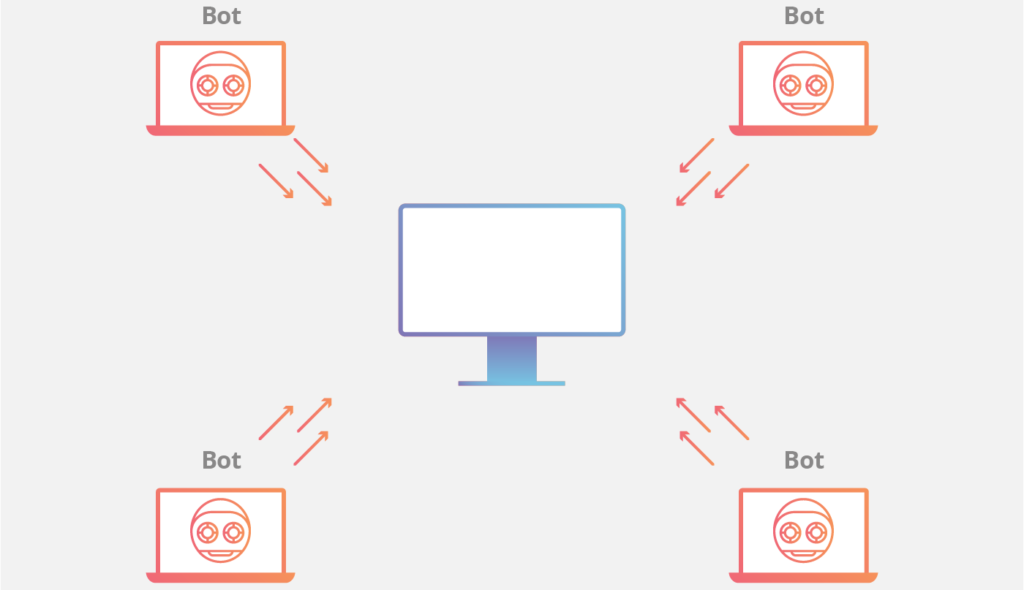Bot Attacks: What They Are & How to Protect Your Website
What is a Bot Attack?
- A bot attack is a cyberattack where automated scripts are used to perform malicious activities.
- Bots can steal data, deploy malware, bypass security, and disrupt online services.
- Cybercriminals use automation to launch attacks at scale, making them more dangerous and harder to stop.
- 86% of cyberattacks involve bots, and they continue to evolve in complexity.
Why Do Hackers Use Bots?
- Financial Gain – Most attacks aim to steal money or valuable data.
- Espionage & Political Motives – Some attackers seek to gather intelligence.
- Disruption – Some attacks aim to take websites down or cause system failures.
- Data Theft – Bots scrape private data for fraud or unauthorized resale.
Impacts of Bot Attacks
- Website Downtime – Bots overload servers, making websites slow or unavailable.
- Financial Losses – Businesses suffer from fraud, ransoms, and security breaches.
- Legal Consequences – Data breaches may lead to regulatory fines (GDPR, HIPAA, etc.).
- Customer Distrust – Security issues can damage brand reputation and drive customers away.

Types of Bot Attacks
1. Credential Stuffing
- Hackers use stolen usernames/passwords to try logging into multiple accounts.
- Many people reuse passwords, making multiple accounts vulnerable after one breach.
2. Scraping Attacks
- Bots extract private or sensitive information from websites.
- Example: Hackers scraped 553 million Facebook accounts, exposing personal data.
3. Account Takeover (ATO)
- Attackers use stolen credentials to illegally access user accounts.
- Methods include brute force attacks and keylogging malware.
4. DoS & DDoS Attacks
- Denial of Service (DoS): Bots flood a website with fake traffic, causing slowdowns or crashes.
- Distributed Denial of Service (DDoS): Similar but uses multiple sources to amplify the attack.
How to Detect Bot Attacks
- Unusual Traffic Spikes – A sudden surge in activity may indicate bot behavior.
- High Bounce Rates – Bots visiting and leaving pages quickly may distort analytics.
- Odd User Behavior – Repeated login failures or random browsing patterns.
- Frequent Captcha Triggers – Suggests automated login attempts.
How to Prevent Bot Attacks
1. CAPTCHA & reCAPTCHA
- Blocks bot traffic with human-verifiable tests.
- Google’s reCAPTCHA uses machine learning to assess risk levels.
2. Passwordless Authentication
- Passkeys, one-time passwords (OTP), or biometrics prevent stolen credentials from being used.
3. Web Application Firewalls (WAFs)
- Filters malicious traffic before it reaches your website.
- Can block bot requests while allowing real users in.
4. Adaptive Multi-Factor Authentication (MFA)
- Uses risk-based authentication to challenge suspicious login attempts.
- Dynamic verification based on device, location, or behavior.
Final Thoughts
Bot attacks are a growing threat, but strong security measures can help keep them at bay. Using CAPTCHA, MFA, WAFs, and advanced login protections, businesses can protect their websites, customers, and sensitive data from cyber threats.
By securing login flows and monitoring traffic, you can stay ahead of cybercriminals and prevent bot-driven attacks. 🚀
Read more🌐 about latest Tech updates on out Technology Category Section
#CyberSecurity #BotAttacks #WebsiteSecurity #OnlineProtection #DataSafety #TechTips



